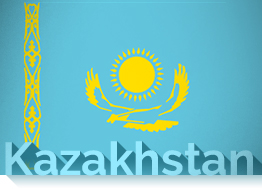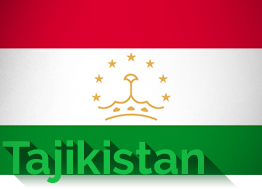






[column parallax_bg=”disabled” parallax_bg_inertia=”-0.2″ extended=”true” extended_padding=”true” background_color=”#ffffff” background_image=”” background_repeat=”” background_position=”” background_size=”auto” background_attachment=”” background_video=”” vertical_padding_top=”0″ vertical_padding_bottom=”0″ more_link=”” more_text=”” left_border=”transparent” class=”” id=”” title=”” title_type=”single” animation=”none” width=”1/1″ last=”true”]
[tabs layout=”horizontal” nav_color=”accent2″ left_color=”accent8″ right_color=”accent1″]
The total land mass of the former Soviet Union (CIS) is 22,402,200 square kilometers: 11,000 kilometers from East to West; 5,000 kilometers from South to North. It is approximately 101 times larger than the Korean peninsula, 226 times larger than South Korea, 2.4 times larger than the United States, and is one-sixth of the total land mass of the Earth.
There are twelve nations which border the former Soviet Union: Norway, Finland, Czech, Slovakia, Hungary, Romania, Turkey, Iran, Afghanistan, China, and North Korea.
In 1990, the former Soviet Union self-destructed because of President Gorbachev’s reformation (Perestroika) and open policy (Glasnost) which divided the nation into fifteen Republics (Russia, Belarus, Ukraine, Latvia, Lithuania, Estonia, Uzbekistan, Kazakhstan, Kyrgyzstan, Moldova, Turkmenistan, Georgia, Armenia, Azerbaijan, and Tajikistan).
January 1st, 1992, the president of the former Soviet Union at the time, Yeltsin, declared 12 of the republics the Commonwealth of Independent States (CIS) with the exception of Estonia, Latvia, and Lithuania.
The total land mass of the former Soviet Union (CIS) is 22,402,200 square kilometers: 11,000 kilometers from East to West; 5,000 kilometers from South to North. It is approximately 101 times larger than the Korean peninsula, 226 times larger than South Korea, 2.4 times larger than the United States, and is one-sixth of the total land mass of the Earth.
There are twelve nations which border the former Soviet Union: Norway, Finland, Czech, Slovakia, Hungary, Romania, Turkey, Iran, Afghanistan, China, and North Korea.
In 1990, the former Soviet Union self-destructed because of President Gorbachev’s reformation (Perestroika) and open policy (Glasnost) which divided the nation into fifteen Republics (Russia, Belarus, Ukraine, Latvia, Lithuania, Estonia, Uzbekistan, Kazakhstan, Kyrgyzstan, Moldova, Turkmenistan, Georgia, Armenia, Azerbaijan, and Tajikistan).
January 1st, 1992, the president of the former Soviet Union at the time, Yeltsin, declared 12 of the republics the Commonwealth of Independent States (CIS) with the exception of Estonia, Latvia, and Lithuania.
구소련(C.I.S.)의 면적은 22,402,200 평방 Km로서, 동서로는 11,000Km, 남북으로는 5,000Km에 이르는 광활한 땅이다. 한반도의 약 101배, 한국(남한)의 약 226배, 미국의 2.4배에 이르는 지구 전체 육지면적의 약 1/6에 해당되는 대륙이다.
구소련과 국경을 이루고 있는 나라만 해도 12개이다 (노르웨이, 핀란드, 체코, 슬로바키아, 헝가리, 루마니아, 터키, 이란, 아프가니스탄, 중국, 북한).
구소련은 1990년에 고르바쵸프 대통령의 개혁(페레스트로이카)과 개방(글라스노스트) 정책으로 인하여 공산주의가 붕괴되고 15개 공화국으로 분리되었다: 러시아 공화국, 백러시아 공화국, 우크라이나 공화국, 라투비아 공화국,리투아니아 공화국, 에스토니아 공화국, 우즈백공화국,카작스탄 공화국, 타지키스탄 공화국, 키르키즈탄공화국, 몰다비아 공화국, 그루지야 공화국, 아르메니아 공화국, 아제르바이잔 공화국, 투르크멘 공화국.
1992년 1월 1일부터 그 당시 대통령이었던 옐친에 의해 발트 3국(에스토니아, 라투비아, 리투아니아)을 제외한 12개 공화국으로 독립국가연합(CIS: Commonwealth of Independent States)을 이루어 오늘날까지 이르고 있다.
GKC 구소련 선교권역에는 2020년 11월 현재, 8개국에 42명의 선교사가 사역을 감당하고 있다.
